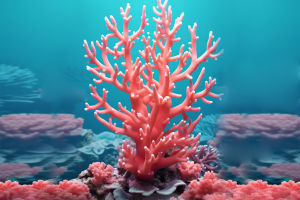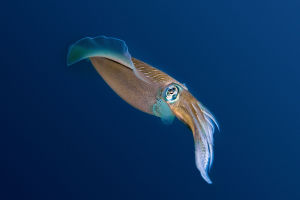Have you ever wondered about the fascinating creatures that dwell beneath the ocean's surface? One of the most intriguing of them all is the sea star. These remarkable animals are not just beautiful to look at; they also possess some incredible abilities that make them true survivors of the deep.
Today, we’ll dive into the world of sea stars, exploring their physical characteristics, how they live, and the unique features that set them apart from other creatures in the sea. So, let’s get started on this exciting journey to learn about one of nature’s greatest marvels!
Starfish | 60 Starfish Names | The Sea Star
video by InfoZillien
What is a Sea Star?
Sea stars, also known as starfish, are marine invertebrates that belong to the phylum Echinodermata. The most common species are characterized by their five-point radial symmetry, with each arm extending from a central disk. However, some sea stars can have up to 10 arms. Their bodies are composed of a rigid skeleton, and they use a unique water vascular system to move, feed, and breathe. One of the most interesting things about sea stars is that they don’t have a brain. Instead, their nervous system is spread throughout their body, which allows them to sense their environment and respond in amazing ways.
Habitat and Distribution
Sea stars can be found in oceans all around the world, from tropical to polar waters. They inhabit the ocean floor, ranging from shallow intertidal zones to depths of up to 6,000 meters (about 20,000 feet). This makes them one of the most adaptable creatures in the marine world. Whether it's in warm coral reefs or cold deep-sea environments, sea stars thrive in a wide variety of habitats. They can often be seen clinging to rocks, reefs, or sandy seabeds.
How Do Sea Stars Eat?
You might be surprised to learn that sea stars have an unusual way of eating. Their mouth is located on the underside of their body, and their digestive system includes two stomachs. One of these stomachs is capable of extending out of their body to surround and digest food externally. This external digestion is a key feature of sea stars that allows them to eat prey much larger than their mouth. They are particularly skilled at hunting mollusks like clams, oysters, and other marine animals by prying open their shells and then digesting the soft tissue inside.
Regeneration Abilities
One of the most remarkable features of sea stars is their incredible ability to regenerate lost limbs. If a sea star loses an arm, it can grow back within a short period of time. In some cases, if a sea star loses a part of its central disk, the limb itself can regenerate into a whole new sea star! This regeneration ability is not unique to sea stars; other creatures like lizards and worms also share this fascinating trait. Sea stars sometimes even drop their arms deliberately as a defense mechanism to escape predators.
The Water Vascular System: How Sea Stars Move
Sea stars have a unique way of moving thanks to their water vascular system. This system consists of a network of fluid-filled canals that extend into their arms. Through this system, sea stars can extend and retract tube feet located on the underside of each arm. These tube feet function like tiny suction cups that allow sea stars to crawl along surfaces, pry open shells, and even catch food. The water vascular system also helps them exchange gases and transport nutrients, making it an essential part of their survival.
Nature’s Miracle
The sea star is undoubtedly one of nature’s most incredible and resilient creatures. From its unique feeding habits to its extraordinary ability to regenerate lost limbs, the sea star exemplifies the wonders of evolution and survival in the ocean. We hope you’ve enjoyed learning about these fascinating animals and gained a new appreciation for the wonders beneath the sea.
Lykkers, we’re sure that after reading this article, you’ll look at sea stars in a whole new light. Don’t forget to explore the marine world around you and uncover more incredible secrets of the deep!


